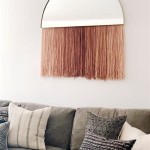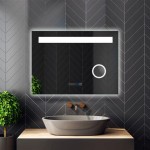DIY Glass into Antique Mirror
Creating an antique mirror finish on a piece of glass is a rewarding project that can add a touch of vintage charm to any space. This process involves applying a specialized mirroring solution to the glass, resulting in a reflective surface with the characteristic speckled and aged appearance of an antique. This article provides a comprehensive guide to achieving this effect at home.
Essential Materials
Before embarking on this project, gather the necessary materials. These include a clean piece of glass in the desired size and shape, a suitable mirroring solution, distilled water, a spray bottle, safety goggles, gloves, and a dust-free workspace. The mirroring solution is readily available online or at craft supply stores. Opt for a high-quality solution specifically designed for creating antique mirror effects for optimal results. Distilled water is crucial as impurities in tap water can interfere with the chemical reaction of the mirroring solution.
Preparing the Glass
Thorough cleaning is paramount for a successful antique mirror finish. Any dust, grease, or fingerprints can prevent the mirroring solution from adhering properly. Wash the glass with a mild soap and rinse thoroughly with distilled water. Once rinsed, dry the glass completely with a lint-free cloth. It's recommended to further clean the glass with a glass cleaner specifically designed for removing streaks and residue. This extra step ensures a pristine surface for the mirroring solution.
Applying the Mirroring Solution
Protecting oneself from the chemicals in the mirroring solution is crucial. Wear safety goggles and gloves throughout the application process. In a well-ventilated area, carefully follow the manufacturer's instructions for mixing the mirroring solution. This typically involves combining the solution with distilled water in specific proportions. Using a clean spray bottle, apply an even coat of the mixed solution to the glass surface. Avoid over-spraying which can lead to drips and an uneven finish. Ensure the entire glass surface is covered with a thin, consistent layer.
Creating the Antique Effect
The antique effect is achieved through a process called "aging." After the mirroring solution has been applied and allowed to dry according to the manufacturer's instructions, a second solution, often referred to as an "aging" or "patina" solution, is used. This solution reacts with the mirrored surface to create the desired speckled and aged appearance. Apply the aging solution sparingly, using a spray bottle or a soft cloth, focusing on areas where natural aging would typically occur, such as the edges and corners. The amount of aging solution applied will determine the intensity of the antique effect. Experimenting on a small piece of glass beforehand can be helpful to achieve the desired look.
Sealing the Mirrored Surface
Once the desired antique effect is achieved and the aging solution has dried, sealing the mirrored surface is essential to protect it from damage and ensure longevity. A clear sealant, such as a clear acrylic spray, is recommended. Apply the sealant in thin, even coats, allowing each coat to dry completely before applying the next. This protective layer will prevent the mirrored surface from oxidizing and maintain the antique appearance for years to come.
Troubleshooting Common Issues
Several factors can influence the final outcome of the antique mirror project. Streaking can occur if the glass is not cleaned thoroughly or if the mirroring solution is applied unevenly. Blotchiness may result from inconsistent application of the aging solution. If any of these issues arise, gently remove the affected areas with a suitable solvent, as recommended by the manufacturer of the mirroring solution, and reapply the solutions, taking care to address the underlying cause. Patience and attention to detail are key to achieving a professional-looking antique mirror finish.
Alternative Antiquing Techniques
Beyond using a specialized aging solution, other methods can be employed to create an antique look. A diluted solution of vinegar can be sprayed onto the mirrored surface to create a subtle aged effect. Alternatively, dabbing small amounts of paint thinner onto the mirrored surface can create a more pronounced and textured antique appearance. These alternative techniques offer varying levels of control over the final aesthetic and allow for greater artistic expression.

How To Antique A Mirror Tutorial Jenna Sue Design

The Ultimate Guide On Diy Antique Mirrors So Much Better With Age

How To Turn Ordinary Glass Into An Antique Mirror

Diy Antique Mirror Easy To Do And Looks Authentic My Creative Days

The Ultimate Guide On Diy Antique Mirrors So Much Better With Age

How To Turn Glass Into An Antique Mirror The Morris Mansion

How To Antique A Mirror Easy Diy Tutorial

How To Turn Ordinary Glass Into An Antique Mirror Diy Frame

How To Antique A Mirror From The Front With Paint Average But Inspired

How To Antique A Mirror Tutorial Jenna Sue Design








